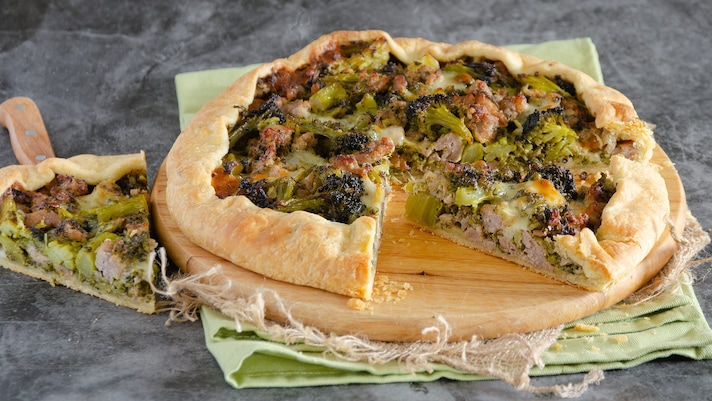
Quiche and savory pies are two baked specialties characterized by a crumbly base and a soft filling, with the ideal consistency for slicing and eating without cutlery. Quiche could be considered one of the most famous French savory pies: but be careful, not all savory pies from across the Alps are quiches. What do we mean? That the two foods are not synonymous at all. What distinguishes the latter in particular, for example the famous quiche Lorraine, from a similar preparation with bacon? The difference (the main one) is the mixture used to bind the ingredients, called appareil à quiche, a viscous cream made from eggs and crème fraîche that absolutely cannot be missing, or the recipe would be called something else. Furthermore, the bases between the preparations also differ: the classic quiche relies on shortcrust pastry, while for savory pies you have a greater choice, also opting for puff pastry or shortcrust pastry depending on what you prefer.
Origins
Quiche is one of the most iconic preparations of French cuisine, despite its name being of German origin: the term, in fact, comes from kuchen, meaning cake. This is explained by its geographical origins in the territories of Alsace and Lorraine, which for years were disputed between France and Germany, so much so that they only became French once and for all after the end of the Second World War. From this, we understand that we are talking about a specialty codified within the broader category of savory pies, which have ancient roots. Already in the times of the Greeks and Romans, rough grain doughs were brought to the table as containers (not edible) filled with meat, vegetables, fish, and cheese. In the Middle Ages, "pies" appeared, with the crust that, while still a functional component, always not very tasty, was an integral part of the dish, while it was in the Renaissance that the base became more refined. Over time, aristocratic savory pies increasingly became the symbol of poor cuisine, simplified in their preparation thanks to the use of inexpensive raw materials, such as wild herbs, eggs, milk and flour, easily available to farmers.

Base
The quiche base is made with classic shortcrust pastry, the way we know it—just flour, water, butter, and salt. However, there's also a French version called pâte brisée: what's the difference? Once the other ingredients have reached a sandy consistency, egg yolk is added before adding the water. For savory pies, however, there aren't any specific instructions for the shell: shortcrust pastry, puff pastry, savory shortcrust pastry, or pasta matta are all variables to take into consideration. Furthermore, quiches don't require any topping layer, while savory pies can enclose the filling inside a casing.

Filling
The filling is the key detail: the one in quiche has a specific name, and is called appareil or appareil à quiche. It is made by mixing eggs and sour cream in a bowl (if you can't find it, substitute with fresh cream), adding salt and nutmeg, and mixing everything well with a whisk, as there must be no lumps. A neutral mixture in which milk can also be added or, in place of crème fraîche, crème fleurette, a more liquid and less dense version. At this point, a variety of ingredients are added to give it flavor: in the original quiche Lorraine, only bacon is added, although it is now common to add Gruyère (as popularized by the famous chef Escoffier) or Emmental, reviving what is known across the Alps as quiche Vosgienne. Then give free rein to your favorite ingredients: very popular in France are zucchini, mushrooms and leeks. As far as savory pies are concerned, there is no general rule: the filling changes depending on whether it is a local specialty (such as erbazzone), the time of year (where seasonal or holiday ingredients are used) or, more simply, what you have in the fridge, given that it is a perfect dish for reducing waste.
;Resize,width=767;)
